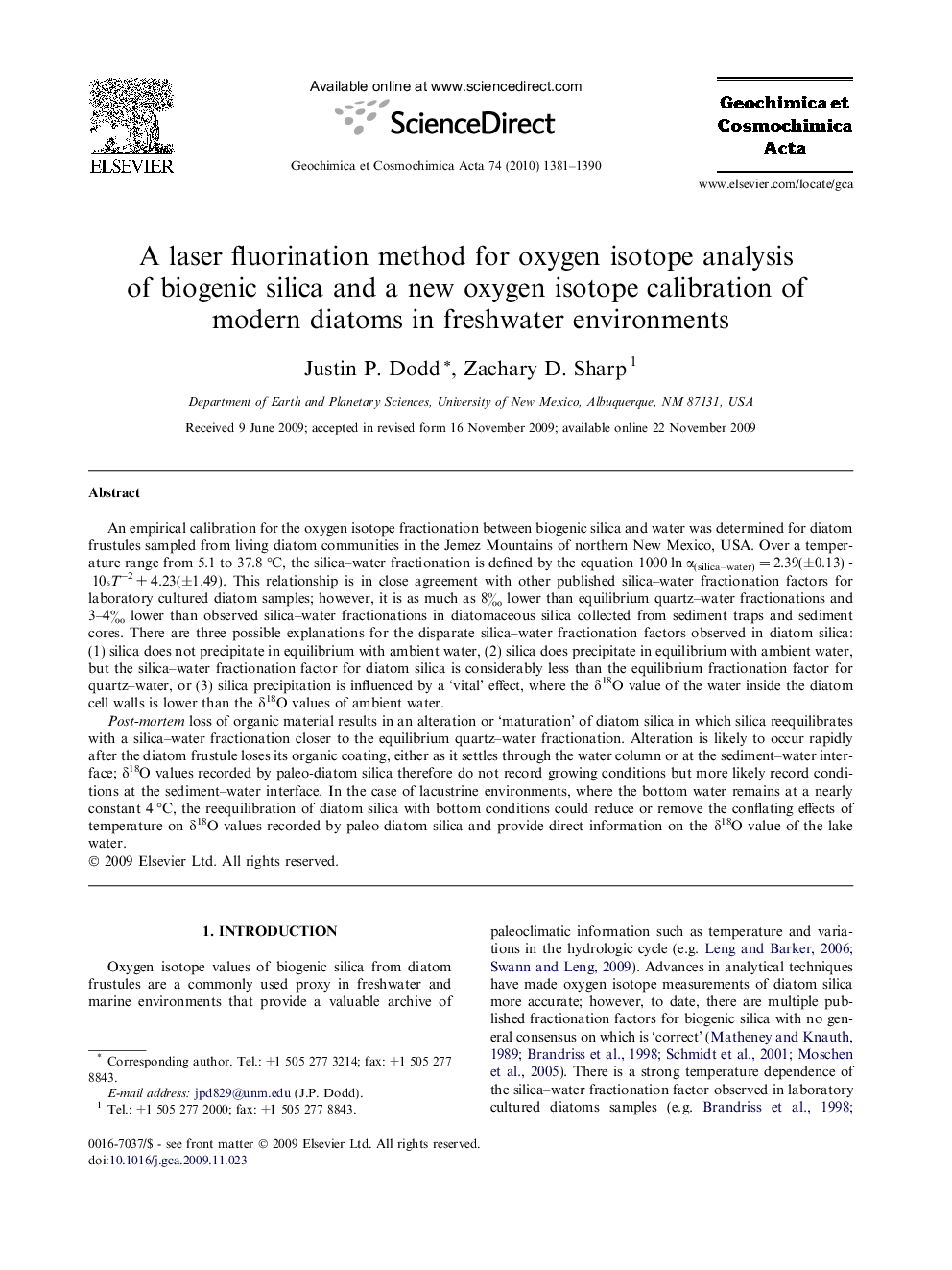| کد مقاله | کد نشریه | سال انتشار | مقاله انگلیسی | نسخه تمام متن |
|---|---|---|---|---|
| 4703753 | 1352878 | 2010 | 10 صفحه PDF | دانلود رایگان |

An empirical calibration for the oxygen isotope fractionation between biogenic silica and water was determined for diatom frustules sampled from living diatom communities in the Jemez Mountains of northern New Mexico, USA. Over a temperature range from 5.1 to 37.8 °C, the silica–water fractionation is defined by the equation 1000 ln α(silica–water) = 2.39(±0.13) × 106T−2 + 4.23(±1.49). This relationship is in close agreement with other published silica–water fractionation factors for laboratory cultured diatom samples; however, it is as much as 8‰ lower than equilibrium quartz–water fractionations and 3–4‰ lower than observed silica–water fractionations in diatomaceous silica collected from sediment traps and sediment cores. There are three possible explanations for the disparate silica–water fractionation factors observed in diatom silica: (1) silica does not precipitate in equilibrium with ambient water, (2) silica does precipitate in equilibrium with ambient water, but the silica–water fractionation factor for diatom silica is considerably less than the equilibrium fractionation factor for quartz–water, or (3) silica precipitation is influenced by a ‘vital’ effect, where the δ18O value of the water inside the diatom cell walls is lower than the δ18O values of ambient water.Post-mortem loss of organic material results in an alteration or ‘maturation’ of diatom silica in which silica reequilibrates with a silica–water fractionation closer to the equilibrium quartz–water fractionation. Alteration is likely to occur rapidly after the diatom frustule loses its organic coating, either as it settles through the water column or at the sediment–water interface; δ18O values recorded by paleo-diatom silica therefore do not record growing conditions but more likely record conditions at the sediment–water interface. In the case of lacustrine environments, where the bottom water remains at a nearly constant 4 °C, the reequilibration of diatom silica with bottom conditions could reduce or remove the conflating effects of temperature on δ18O values recorded by paleo-diatom silica and provide direct information on the δ18O value of the lake water.
Journal: Geochimica et Cosmochimica Acta - Volume 74, Issue 4, 15 February 2010, Pages 1381–1390